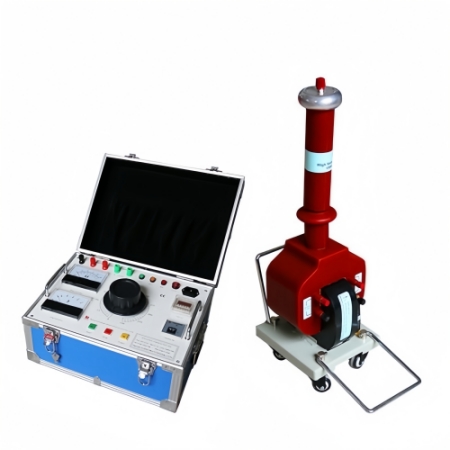How to Maintain Hipot Tester?
A hipot tester is an instrument used to test the insulation strength and withstand voltage of electrical equipment at rated voltage. It can simulate the high-voltage environment that electrical equipment may encounter in actual operation to detect the reliability of its insulation materials and structures and measure its overvoltage capability. The working principle of the hipot tester is to convert low voltage into high voltage using the transformer principle. By adjusting the output voltage of the high-voltage generator, the insulation part of the tested equipment is subjected to the corresponding voltage, and it is observed whether it breaks down or is damaged within the specified time. If the tested equipment can withstand the specified voltage without breakdown or damage during the withstand voltage test, its insulation performance is considered qualified.

Common Faults
The hipot tester is of great significance in the research and development, production, and maintenance of electrical equipment in the power, electronics, communications, railway, and other industries. Through the withstand voltage test, the insulation performance and safety performance of electrical equipment can be ensured, and equipment damage and accidents caused by insulation failure can be prevented. During use, users may also encounter various faults. In this article, ATO Industrial Automation summarizes some common faults in actual operation and their troubleshooting methods.
- Unable to Boost: It may be caused by power supply problems, high-voltage generator failure, control circuit failure or output short circuit.
- Slow or Unstable voltage rise: This may be a manifestation of unstable power supply voltage, high-voltage transformer, or oscillator failure.
- Excessive Leakage current: During the withstand voltage test, if the leakage current exceeds the specified threshold, it may be that the object being tested has insulation defects or the tester itself has leakage problems.
- Inaccurate Test Results: This may be caused by a failure of the tester's measuring unit, changes in ambient temperature, poor contact with the test head, etc.
- No display or Abnormal Display on the Display: This may be caused by a power failure, a damaged display, a circuit board failure, or a software problem.
- Abnormal Sound or No Buzzer: It may be a buzzer failure or a control circuit problem.
- Overheat Protection Starts: If the tester overheats, it may cause the overheat protection to start, thereby stopping the test.
- Short Circuit Protection Starts: During the test if a short circuit occurs, the short circuit protection will start immediately to protect the tester and the object being tested.
For these faults, troubleshooting is usually required according to the tester's instruction manual. If the problem is complicated, professional technical support will also be required. In daily use, it is very necessary to regularly maintain and inspect the hipot tester equipment to ensure that it works in good condition.
Maintenance Method
Different types and uses of hipot testers may be different, but generally, the following maintenance tips can be used for safe pressure measurement. Through regular maintenance and care, the performance of the hipot tester can be ensured to be stable and its service life can be extended. It also helps to reduce downtime caused by equipment failure and improve work efficiency.
Daily Maintenance
Before using the hipot tester, the equipment must be checked to ensure that the tester is working properly. For example, check whether the appearance of the instrument is damaged or deformed, whether the power cord and test line are firmly connected, whether the power supply is stable and whether the internal circuit, power supply, high-voltage transformer and other components are normal. It should be used in a ventilated, dry working environment without flammable and explosive substances, and stay away from live bodies to avoid grounding or leakage causing personal injury.
During operation, the operator must strictly follow the operating instructions and usage procedures, and pay attention to personnel safety. Before testing, check the wiring to ensure that the test clip or test needle is in good contact and must not be loose.
After the work is finished, perform a simple cleaning, clean the dust on the surface and inside of the instrument, check whether the instruments and accessories are damaged, and replace them in time if they are damaged. Regular maintenance should be performed at least once a month, including cleaning the dust inside the instrument, calibrating the display accuracy of the hipot tester, and verifying the accuracy of the data.
Maintenance Cycle
Daily maintenance should be performed after daily use, and regular maintenance should be performed at least once a month. Some specific maintenance tasks, such as checking the high-voltage electrode line and cleaning the surface of the hipot tester, may need to be performed once a week.

